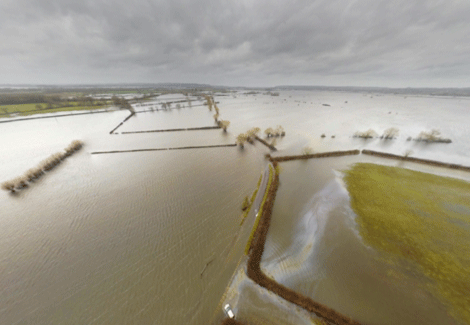
With persistent rain still falling, parts of the UK are still several feet underwater – with some suggesting that this is to become a near constant scenario for winters in the years ahead.
Seeing as we seem to be still building on flood plains (and are dogged in our resilience/stupidity to remain living there) we’re going to need more products to help us live with rising waters
Somewhere between building an Ark, and tearfully stacking sandbags in a downpour, we found several innovative products that could make the difference when trying to save homes and businesses.
First defence
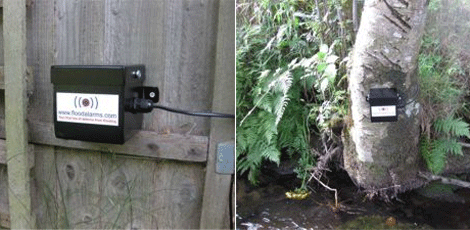
The FloodAlarm was designed out of necessity
Chances are you’re aware that you live in an area prone to rising water levels – be it a nearby river that can burst, or rising groundwater.
Flood alarms can be fixed on a nearby boundary wall, or even under the floorboards, to alert you to rising water. Most come with the ability to automatically call your mobile phone, should you be away from the property – hopefully giving you enough time get back and activate some kind of defences.
A simple piece of kit – flood waters rise, float-switch breaks the circuit within the housing, triggers alarm – the one featured here is the refined version of one built by a Welsh couple who’s house was under threat, so designed their own system.
The quick and the dammed
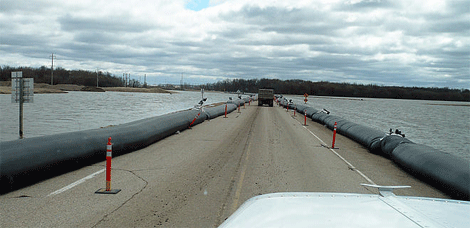
The Aqua Dam is an engineering favourite for holding back water
Sandbags are a bit rubbish really; the long relied on hemp sack does a cheap and vaguely efficient job, but if you’re prone to flooding where are you going to store a mountain of them?
Purpose designed flood protection offers much better protection, is easier to store and faster to erect.
A defence such as the Aqua Dam is a long tube filled with water pumped inside it. Given the nature of its design, it can be scaled in size, from enough to cover your front door, to an entire river bank.
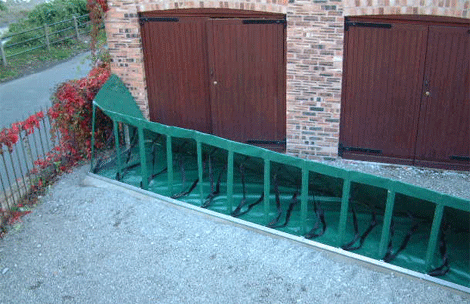
The Rapidam is a single-component, flexible membrane flood barrier that uses the flood water to provide a sealing pressure with the ground
Equally useful are scalable solutions such as the Rapidam for deflecting water, and being quickly deployable along long lengths from a handling system.
Needing a comparatively low level of manpower and equipment (unlike sandbags that need a full crew of volunteers) it can be knocked up in under an hour, and because it’s mountable, it’s virtually impossible to assemble incorrectly.
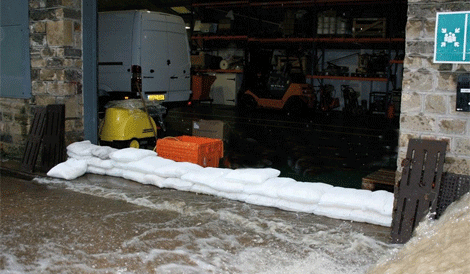
Floodsax start life as lightweight sheets, but transform into watertight blocks when wet
If small scale defences are needed, then ‘smart’ sandbags are probably the best innovation – FloodSax, for example, are transformed from being as light as a pillowcase to become as tough and heavy as sandbags within minutes when exposed to water.
Being lightweight, even the frailest of grannies can deploy a solid wall to protect themselves from rising water.
Twenty fit into a cardboard box so can be ready for action, and the flood water itself can be used to activate a gelling polymer inside the porous case, which becomes taut in just over 3 minutes.
Post flood, they can be used during the clean-up operation, soaking up all flilthy floodwater with each bag absorbing 22 litres.
Building materials
Instead of building an ark, we’re determined to continue populating flood plains, so with this in mind designers are creating a new breed of domestic fixtures that can stand up to the elements.
Places where flood water most commonly penetrates have been waterproofed, with front doors, garage doors and air bricks coming in a range of flood-friendly forms.
More extreme is the range of new construction materials, from plasterboard to cavity insulation foam, that have been given the waterproofing treatment.
Trouble underground
Sadly, protection against rising ground water is decidedly oldskool: Sumps (holes dug in the ground) create a low point to collect flood water, which can be pumped away.
Modern pumps can be switched on automatically using float-switches, while more sophisticated solutions have back-up power supplies – although the more industrial the better.
Last resort
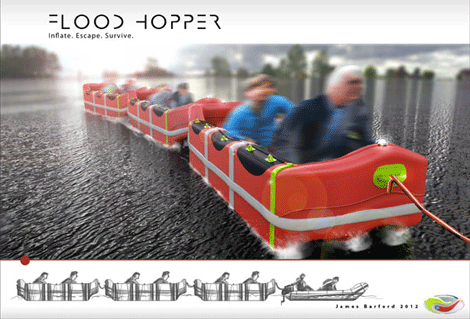
No matter where in the country the flood is, there is always some muppet in a canoe, paddling a channel through misfortune in from of television cameras.
However, victims might soon have to follow suit and take to the water to protect themselves and their possessions.
Designer James Barford arrived at the Flood Hopper, a daisy chain of inflatable craft for groups of people to be led away from a property in an emergency.
With two people in each rapid-inflating dinghy, a single powered boat can tow an entire group.
The next step is protecting possessions, where frankly, this man in Kentucky cannot be beaten.

